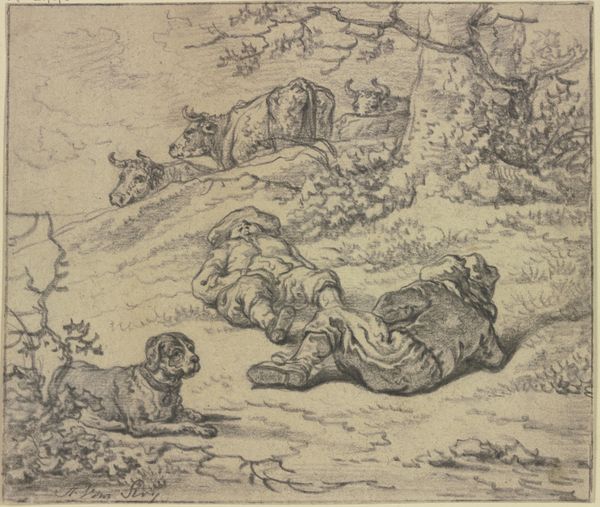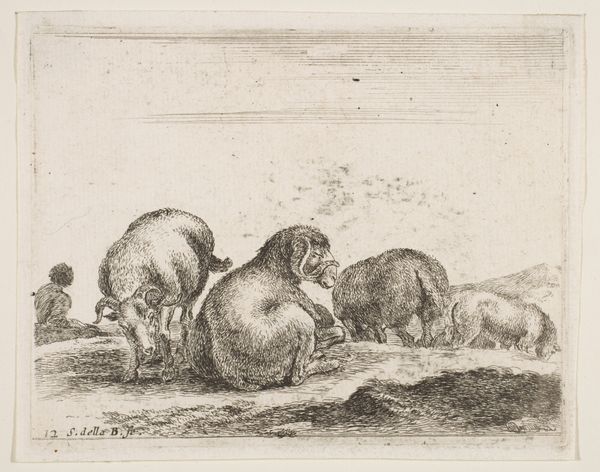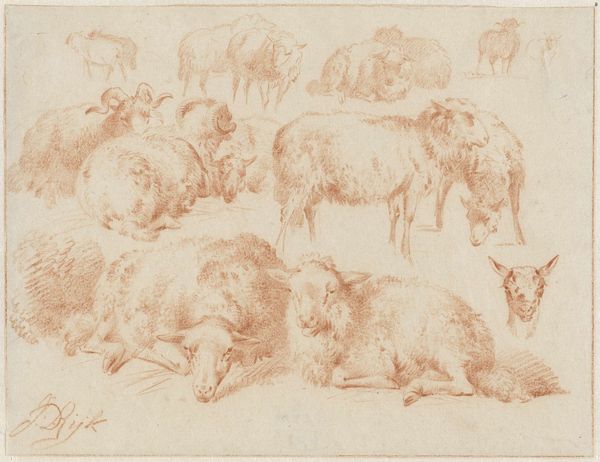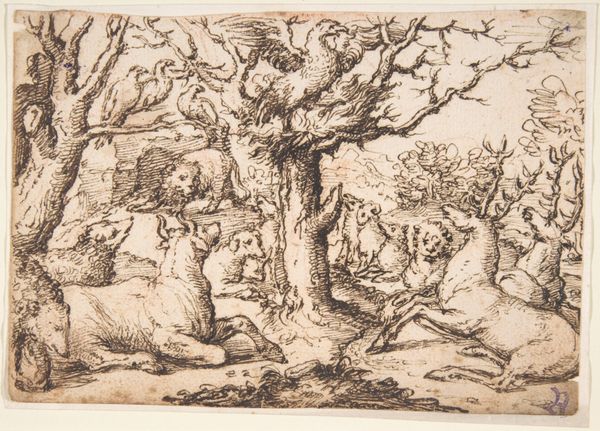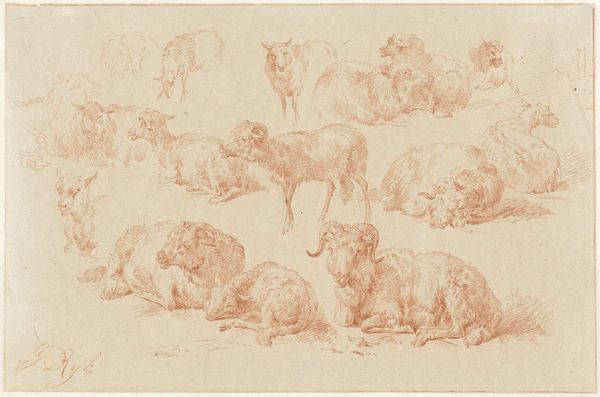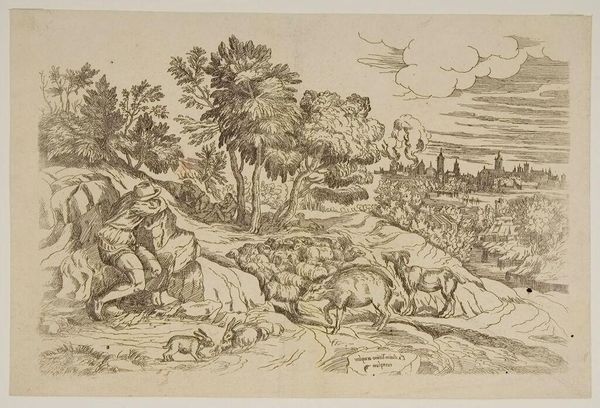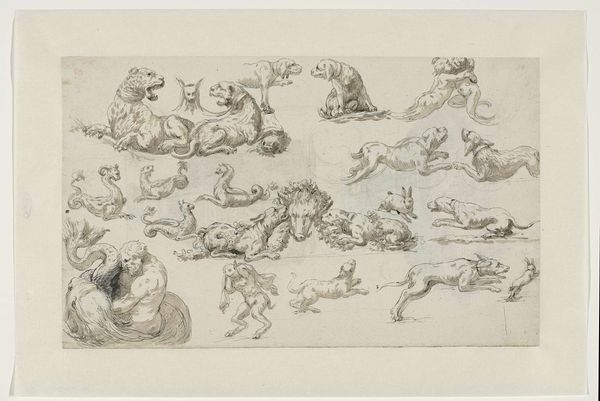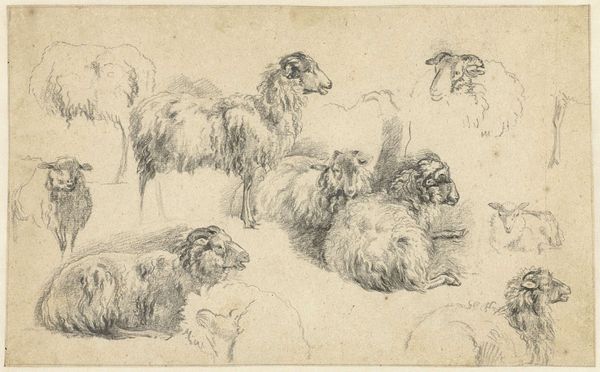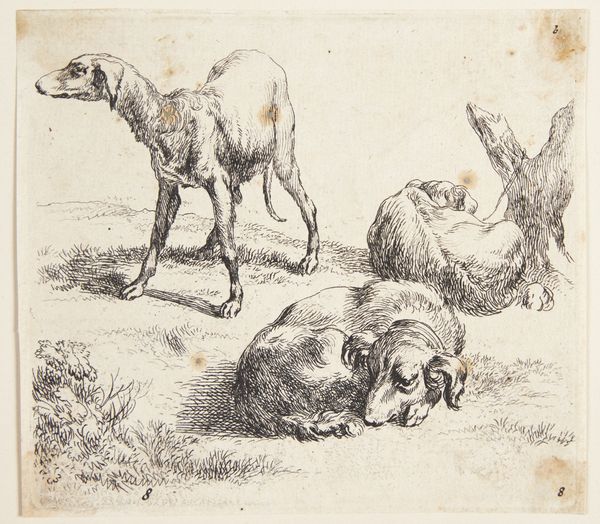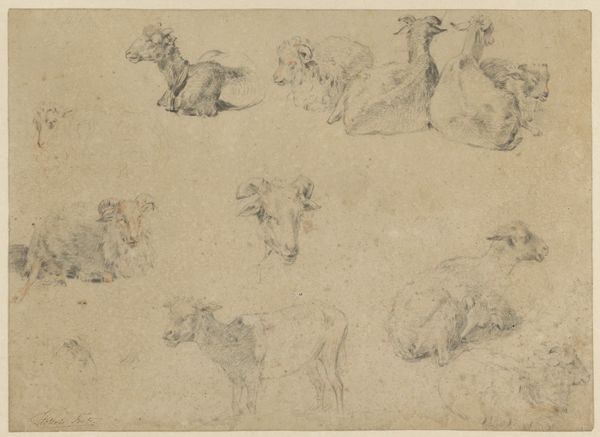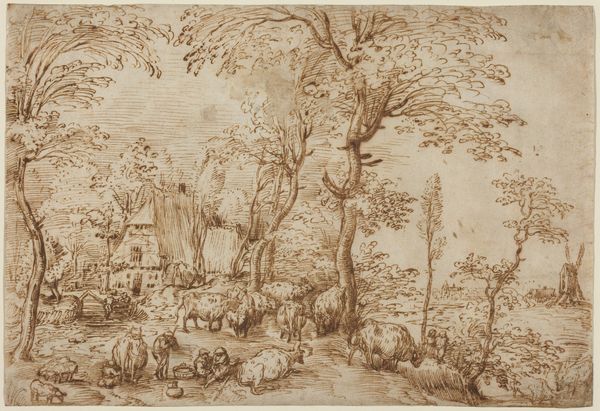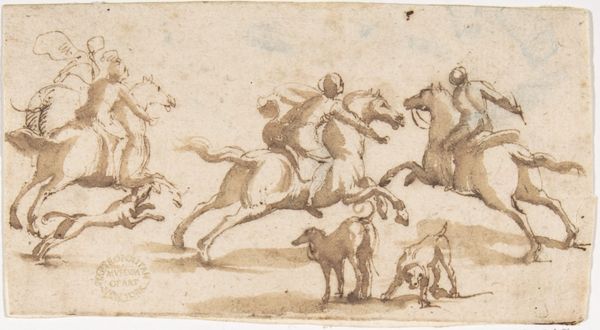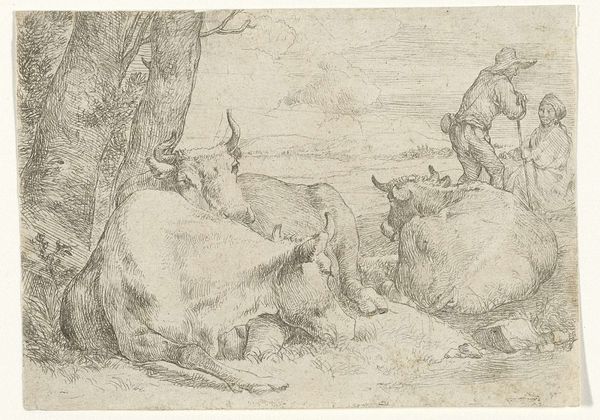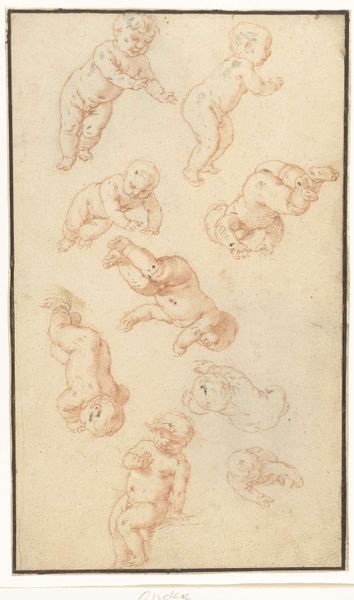
drawing, ink, pencil
#
drawing
#
pen drawing
#
landscape
#
etching
#
ink
#
romanticism
#
pencil
#
genre-painting
#
realism
Dimensions: height 206 mm, width 313 mm
Copyright: Rijks Museum: Open Domain
Curator: Welcome! We're standing before "Studies van Schapen," a pen and ink drawing executed by Jan van Ravenswaay in 1824. Editor: My first thought? Such calm. An incredible display of soft, gentle lines depicting this gathering of sheep. It feels… pastoral, in the truest sense. Curator: Indeed. Ravenswaay was working during a time of shifting social structures in the Netherlands, when traditional rural life was beginning to be romanticized amidst increasing industrialization. Editor: So, depictions of tranquil, agrarian scenes served a dual purpose. Idealizing an existence quickly fading and, perhaps unconsciously, obscuring the harsh realities of that life. Curator: Precisely. Works like this became powerful symbols of a perceived simpler, more authentic existence, although that authenticity was often heavily mediated. It's tempting to view this simply as an exercise in realism, yet there is a touch of romanticism as well. Editor: Consider who these images were being made for: a rapidly emerging middle class increasingly distanced from any actual farm life. Were they actually connecting with the realities of the depicted scenes? I doubt it. Curator: We see then a reflection of an evolving social and economic landscape and how ideas surrounding the working class become intertwined with artistic production and consumption. Editor: Looking closer at this etching, it's not just about replicating forms, is it? There's an expression, a story unfolding within that seemingly still setting. You begin to consider the broader questions of rural life at the time: the economics, the human impact. Curator: So, instead of merely viewing this artwork as a pretty landscape, we can interpret it as a testament to that shift in societal ideals and emerging capitalism’s impact on the way we envision work and leisure. Editor: I came in seeing only sheep. Now I'm grappling with capitalism, social ideals, and romanticizing working class history. Art history does it again! Curator: That’s the power of connecting historical context to the visual experience. It truly makes you question our modern understanding of these simple images.
Comments
No comments
Be the first to comment and join the conversation on the ultimate creative platform.
